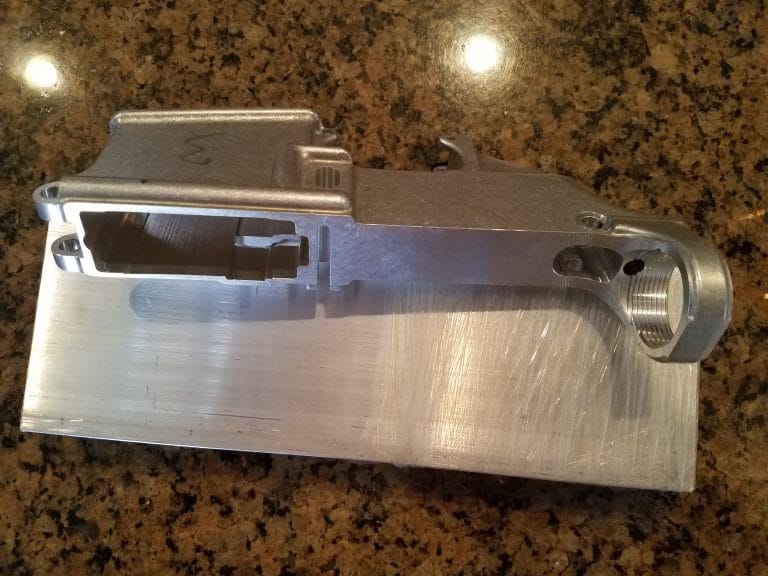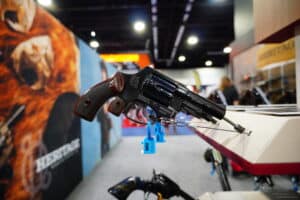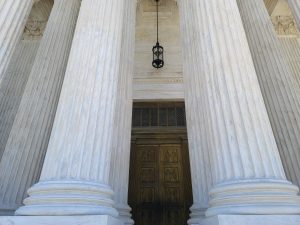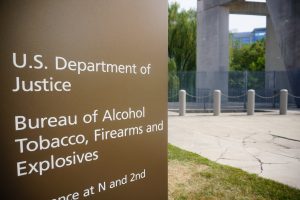The Department of Justice on Friday published its proposed rule broadening the definition of firearm to ban so-called ghost guns.
The new rule would expand the ATF’s power to determine what constitutes a firearm. It would also make it much more difficult to sell unfinished firearms receivers, especially as part of a gun-building kit. The proposed rule is nearly identical to the draft proposal published by The Reload in April.
Attorney General Merrick Garland framed the expansion of the ATF’s power as a way to close loopholes.
“Criminals and others barred from owning a gun should not be able to exploit a loophole to evade background checks and to escape detection by law enforcement,” he said in a statement. “This proposed rule would help keep guns out of the wrong hands and make it easier for law enforcement to trace guns used to commit violent crimes, while protecting the rights of law-abiding Americans.”
The move comes after President Joe Biden ordered the DOJ and ATF to find a way to ban “ghost guns” through regulation. The proposal would rework how the receiver of a firearm is defined to give the ATF more leeway in choosing which parts to subject to regulation under the Gun Control Act of 1968. It directly targets manufacturers who make unfinished, and therefore unserialized, receivers which require the buyer to make significant modifications such as removing metal from key components before they can be assembled into a working firearm.
Under the current rule, a gun part can only be regulated as a receiver if it has several key components, including the trigger mechanism and breach. The proposed rule would change that to let the ATF regulate a part as a receiver if it includes just one of those components. It would also add language to the definition allowing the ATF to regulate anything that could be “readily” made into a firearm receiver as though it were a finished receiver.
The proposed rule does not provide a set of objective standards for what constitutes “readily” convertible. Instead, it relies on subjective measures of how long the conversion could take, how difficult it could be, and what tools could be required. The agency pointed to court cases for examples of what readily meant. In one example the agency said a part being completed during “an eight-hour working day in a properly equipped machine shop” qualified as “readily” convertible.
Most AR-15 unfinished or “80 percent” lowers currently on the market can be finished in far less than eight hours with proper equipment, making it possible for ATF to determine the lowers need serialization at practically any point in the manufacturing process. And sales of any kind of unfinished lower could require a federal firearms license and background checks on buyers, if the ATF decides so.
The National Shooting Sports Foundation, which represents gun manufacturers and dealers, said it is reviewing the document and plans to file comments during the review process.
“We will review the proposed rule in detail and will seek input from our members,” Lawrence G. Keane, the group’s general counsel, told The Reload. “We are mindful of the impact that this proposed rule might have on the firearm industry and gun owners in general. We will see if this proposed rule is consistent with what we saw in the leaked draft documents or if it has changed in any way. NSSF will file comments concerning the rule.”
Garland said the new regulations will save lives.
“Although this rulemaking will solve only one aspect of the problem, we have an obligation to do our part to keep our families and our neighborhoods safe from gun violence,” he said.
The rule will be open for public comment for the next 90 days.







2 Responses
What is the total number of people murdered by “Ghost Guns” in 2020?
I make it out to be zero.
Is it possible to get Moderate Merrick to tell us how this limit will save lives and how many expect to be saved?